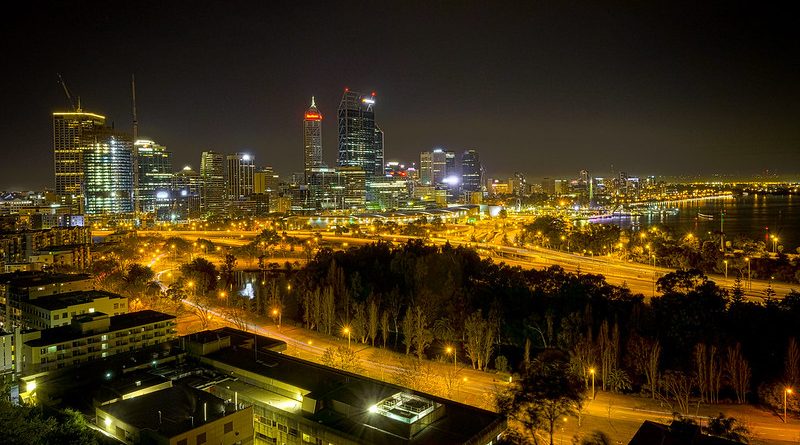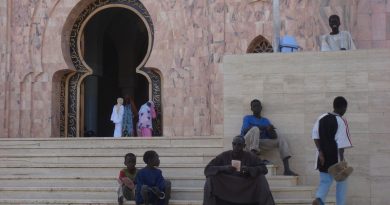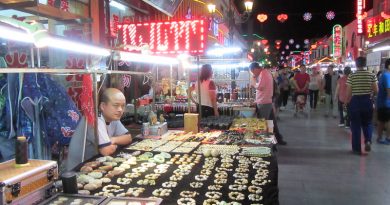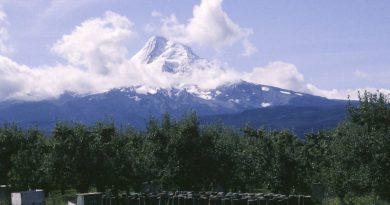Destinations: Western Australia
Perth
Western Australia’s capital, Perth, is a compact city located on the banks of the Swan River. A impressive, modern skyline soars from the bend in the river into an endlessly blue sky – Perth lays claim to the best climate of any Australian capital – but the city also features several examples of convict-constructed architecture and the gorgeously ornate, Edwardian His Majesty’s Theatre. Long, wide boulevard-like streets and the city centre are laid out with inner-city parks and gardens, most notably the Botanic Gardens and Kings Park, from which fabulous views of the city and river can be enjoyed. Cosmopolitan, yet lacking the frenetic and exhausting pace of so many other modern cities, Perth features great shopping, stylish eateries, countless al fresco dining opportunities and a lively cultural heart.
Fremantle
It’s not likely that the laid-back tempo of Perth will be something that most visitors will feel the need for “retreat” from, but there are some nearby destinations that are not to be missed. Colourful Fremantle, a mere 12 miles down the river is one of the best-preserved 19th century ports in the world. Boasting around 150 heritage buildings, including the convict-built Fremantle Prison and the 12-sided Round House, Fremantle is always buzzing, featuring a vibrant arts, crafts, market and street performance scene. The stylish ‘Cappuccino Strip’ on South Terrace is the best place to take in the atmosphere, as well as copious amounts of gourmet food and coffee. Alternatively, Rottnest Island is accessible via high-speed ferry from Perth or Fremantle, and is a favourite destination for beach-bumming, fishing & watersports, including snorkelling.
Margaret River
It’s all about the waves and the wine at Margaret River. Massive surf and epic breaks are hailed by many of the world’s best wave-riders as legendary and surf contests are held here throughout the year. Prime spots are Rocky Point, the Guillotine and the Three Bears, but there are many icing-sugar white beaches for just lounging about and swimming. If the buzz that you’re looking for is not that of adrenalin, the area features about 50 wineries, producing some of Australia’s best wines. These can be visited for an insight into wine production, as well as the all-important tastings and purchases. Where there’s fine wine, you can bet your bottom dollar that there’ll be fine food and the Margaret River is no exception – the region is an epicure’s delight, with everything from seafood, olives, gourmet preserves and cheeses to be guzzled.
Ningaloo Reef
The Ningaloo Reef extends for about 150 miles along the coast of Western Australia, sheltering marine-life packed lagoons. One of the drawcards of the reef is its proximity to the mainland, but the diversity, colour and beauty of this underwater world would make even difficult access worthwhile. Tropical fish darting about in coral gardens, as well as dugongs, manta rays and turtles, can be observed by snorkellers and scuba divers alike, but for a true spectacle, the full moon in March or April sees a virtual week-long orgy take place with a mass coral spawning.Millions of bright pink egg and sperm clusters are released by the corals to the surface, where they mingle and fertilise, in turn attracting a glut of marine life. The giant Whale Shark is among the most notable of these – the world’s biggest fish, it grows up to 11 tons and 60ft. Drifting along close to the water’s surface, it can be swum with at close range from March to June for an awesome and memorable experience.
Purnululu National Park
Imagine that a swarm of monstrous, giant bees had descended upon a remote corner of the earth, and constructed thousands of hives, banded in black and orange, to match their own markings, and you have some idea of the eerie beauty of the Bungle Bungles in Purnululu National Park. Purnululu is the Kija Aboriginal word for sandstone, and it is from this that the huge mounds, which cover 270 square miles of the Kimberley region, are made, the distinctive stripes on their surface being alternating bands of lichen (black) and silica (orange). The domes are fragile and not to be climbed, but in any case, the best view of this spectacular aberration in the landscape is to be had by flying over it. From the air, the secret world guarded by the beehive-like forms is revealed – deep gorges, huge chasms and hidden pools. The area is rich in Aboriginal art, but land-based access to the park is difficult and accommodation virtually non-existent – visitors must be prepared for a totally isolated and self-sufficient wilderness experience in an environment that seems not of this world.
Goldfields
Western Australia’s evocative Goldfields area is the place to step back in time to the frenzied gold fever era. Tours of cramped and claustrophobic mine shafts contrast with the broad, gracious streetscapes of the goldrush. The grand architecture of pubs, hotels and town halls gives a sense of the size these towns burgeoned to, while the number of ghost towns in the area is testimony to how short-lived the fever was. While the main town of Kalgoorlie is a lively, even buzzing town, there’s still a frontier atmosphere here, with the harsh and desolate character of the surrounding landscape contributing to the rough and ready sensibilities of the locals. Hard drinking, gambling, ladies of the night – and bar staff who look like they should be – are very much the order of the day. Its not all bar room brawls and brothels though – one of the primary draws of the area is the vibrant wildflower season from August to October, which sees the rugged landscape burst into life with a carpet of colour.
Karijini National Park
Holding-your-breath adventures through gorges hundreds of yards deep can be experienced in the Karijini National Park. During the monsoon summer months, the gorges are awash with great torrents of water, which diminish in the drier months to become tumbling waterfalls and clear, refreshingly ice-cold rockpools. From up high, the Oxers Lookout is the site at which four gorges converge – the view from here is mind-bogglingly spectacular, but abseiling or clambering down and around the gorges, looking up at the sheer rock faces and taking in the absolute stillness is a definitive Karijini experience. Swimming in subterranean pools, camping under the endless sky and watching the changing light on the folded and layered rock formations evokes a sense of the vast amount of time over which geological pressures have produced this unique environment. The Pilbara area, in which the park is located, also contains over 10.000 examples of Aboriginal rock engravings, more than anywhere else in the world.
Article By Sarah Rodrigues




